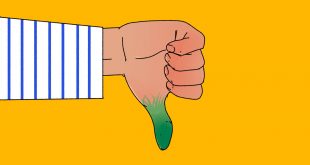 Image copyright
Image copyright
Getty Images
Governments and large corporations may have hammered out agreements to craft a TPP that suits them – but some see no gain for workers
US President-elect Donald Trump has promised to abandon the Trans-Pacific Partnership (TPP) trade deal as soon as he takes office.
The TPP, signed by 12 countries in February, covers 40% of the world’s economy. But all 12 nations need to ratify it, and Mr Trumps comments suggest that simply won’t happen.
Outgoing US President Barack Obama treated trade deals as a priority, but US opponents have characterised the TPP as a secretive deal that favoured big business and other countries at the expense of jobs and national sovereignty.
TPP in a nutshell
The member states are the US, Japan, Malaysia, Vietnam, Singapore, Brunei, Australia, New Zealand, Canada, Mexico, Chile and Peru.
The pact aims to deepen economic ties between these nations, slashing tariffs and fostering trade to boost growth.
Members had also hoped to foster a closer relationship on economic policies and regulation.
The agreement was designed to potentially create a new single market, something like that of the EU.
How big a deal is the TPP?
Pretty big. The 12 countries have a collective population of about 800 million – almost double that of the European Union’s single market. The 12-nation would-be bloc is already responsible for 40% of world trade.
The deal was seen as a remarkable achievement given the very different approaches and standards within the member countries, including environmental protection, workers’ rights and regulatory coherence – not to mention the special protections that some countries have for certain industries.
And that’s why the prospect of the US pulling out is being seen as such a blow for those who signed up.
Which goods and services are involved?
Most goods and services traded between the countries are named in the TPP, but not all tariffs – which are taxes on imports – were going to be removed and some would take longer than others. In all, some 18,000 tariffs are affected.
For example, the signatories said they would either eliminate or reduce tariffs and other restrictive policies from agricultural products and industrial goods.
Under the agreement, tariffs on US manufactured goods and almost all US farm products would go almost immediately.
On textiles and clothing, they would be removing all tariffs, but while the US Trade Representative said most would be removed immediately after the deal is ratified, “tariffs on some sensitive products will be eliminated over longer timeframes as agreed by the TPP Parties”.
They had agreed that free trade in services would be quite a good thing, and in some areas, they were going to liberalise trade.
The full text of the TPP agreement – which runs to 30 chapters – can be read here.
And you can find more on the specific industries involved here.
When did it start?
It began with the P4 trade agreement between just four nations – Brunei, Chile, New Zealand and Singapore – that came into effect in 2006.
That deal removed tariffs on most goods traded between the countries, promised to cut more and also to co-operate on wider issues such as employment practices, intellectual property and competition policies.
What do critics say?
Plenty of people will be happy if the TPP never sees the light of day.
Critics argued it was a not-so-secret gambit to keep China at bay – it is not part of the TPP. For its part, China gave the TPP a cautious welcome but could be the big winner of the TPP failing.
Others said it would pave the way for companies to sue governments that change policy on, say, health and education to favour state-provided services.
The TPP was also seen as intensifying competition between countries’ labour forces.
But the biggest criticism has been of what the campaigners allege were secretive negotiations, in which governments were said to be seeking to bring in sweeping changes without voters’ knowledge.
Defenders say the reason the negotiations were not made public was because there was no formal agreement on them.
Is this the same thing as TTIP?
Confusingly not.
The Transatlantic Trade and Investment Partnership, now generally known as TTIP, is a deal to cut tariffs and regulatory barriers to trade between the US and member states of the EU. Negotiations here are at an earlier stage.
You can read more about it here.
What happens next?
That has become the pertinent question since Donald Trump’s election win.
The text of the agreement has to be signed and then ratified by all 12 signatories. Details of how the deal will be implemented would be argued out in individual countries’ legislatures.
To take effect, the deal has to be ratified by February 2018 by at least six countries that account for 85% of the group’s economic output. And this means that Japan and the US will need to be on board.
But Mr Trump’s comments suggest Congress will be directed to clearly reject it – if they get to vote on it at all.
Some countries, including New Zealand, have suggested some sort of deal may be possible without the US. There has been loose talk of changing some of the conditions to let Mr Trump approve it without losing face. But given the rhetoric coming out of Trump Towers, that looks unlikely.
And Japan’s Prime Minister Shinzo Abe has said a TPP without the US – and its market of 250 million consumers – would be “meaningless”.
 #Bizwhiznetwork.com Innovation ΛI |Technology News
#Bizwhiznetwork.com Innovation ΛI |Technology News



